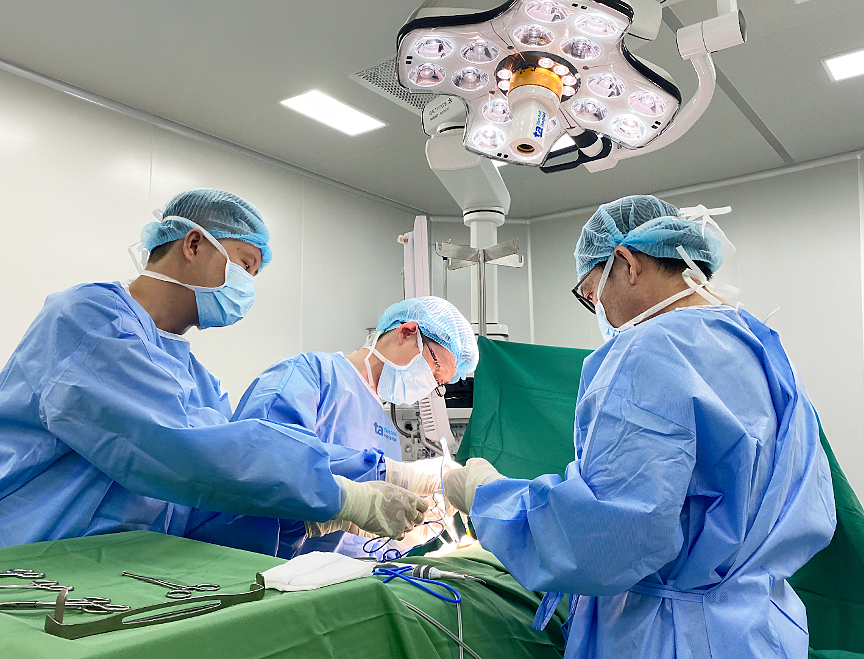Ms. Tuyet presented with a 1 cm, hard lump in her right breast. Dr. Huynh Ba Tan, from the Breast - Head and Neck Surgery Department at Tam Anh General Hospital, suspected cancer. A mammogram and ultrasound classified the lump as BIRADS 4B, and a core needle biopsy confirmed stage one breast cancer. The patient underwent a mastectomy, removal of the remaining breast tissue as a preventative measure, and simultaneous reconstruction of both breasts using the TRAM flap technique.
"This is the first case of simultaneous bilateral breast reconstruction using the TRAM flap technique," Dr. Tan said, explaining that previously, this procedure was only performed on one breast at a time. Advances in reconstructive techniques and the availability of abdominal support devices now allow for safe and aesthetically pleasing bilateral reconstruction with the TRAM flap, eliminating the need for a second reconstructive surgery.
Ms. Tuyet had relatively thick abdominal fat and weakened abdominal muscles due to two pregnancies. Using the TRAM flap allowed for soft, natural-looking breasts and simultaneous abdominal tightening. Incisions were made along the inframammary fold to conceal the scars. Both breasts were removed, and sentinel lymph nodes and subareolar tissue were biopsied, with results showing no cancer cells. The nipples were preserved for the reconstruction. The TRAM flaps were then dissected, tunnels created from the abdomen to both breasts, and the flaps inserted to form the new breasts.
The procedure left a 20 cm long, 10 cm wide, elliptical defect in the patient's abdomen. The surgeon sutured the rectus abdominis muscles to tighten the abdomen and placed two polypropylene mesh implants to reinforce the abdominal wall.
 |
Dr. Tan and the surgical team operating on Ms. Tuyet. Photo: Tam Anh General Hospital |
Dr. Tan and the surgical team operating on Ms. Tuyet. Photo: Tam Anh General Hospital
Following the surgery, Ms. Tuyet's breast cancer was eradicated, resulting in a flatter abdomen and fuller breasts. The pathology report confirmed stage one breast cancer with no lymph node or surrounding tissue involvement, eliminating the need for radiation or chemotherapy. However, due to the hormone-receptor-positive nature of her cancer, she will require endocrine therapy for 5-10 years to prevent recurrence and metastasis.
For one month post-surgery, Ms. Tuyet was advised to bend at the waist instead of standing upright to avoid straining the incisions and abdominal muscles. She was also advised to avoid contact sports, opting instead for low-impact activities like walking and cycling.
According to Dr. Tan, breast cancer has a high cure rate. Early detection and treatment in stage zero offer a near 100% chance of recovery. The 5-year survival rate for patients diagnosed in early stages one and two is as high as 99%.
Nguyen Tram
*The patient's name has been changed.
| Readers can submit questions about cancer here for doctors to answer. |












